Read to the end to see how you can access no prep figurative language worksheets to use in your therapy sessions.
What is Figurative Language?
Figurative language is a form of descriptive language that uses nonliteral meanings to convey a message. It is a commonly used literary device that creates an abstract and imaginary effect for the reader. It is commonly found in stories, as it can help describe characters, events, or settings. Many authors use figurative language to add uniqueness to their work or create a sense of imagery. Figurative language is also used in everyday conversations as well e.g., “There is so much traffic, I’ll never get to school!” (hyperbole)
Understanding of figurative language is important when it comes to higher academic levels (e.g. high school and college) and the development of complex literacy skills (e.g. the ability to read advanced literature and write longer essays).
Difference Between Literal and Nonliteral Language
Literal language
The message is expressed exactly how it is intended
Example: “He was very nervous going into the meeting.”
Nonliteral language
The message requires inferencing/interpretation or has been learned
Example: “He had butterflies in his stomach before he went into the meeting.” (idiom)
Types of Figurative Language
There are numerous types of figurative language; however, we will highlight some of the commonly used forms.
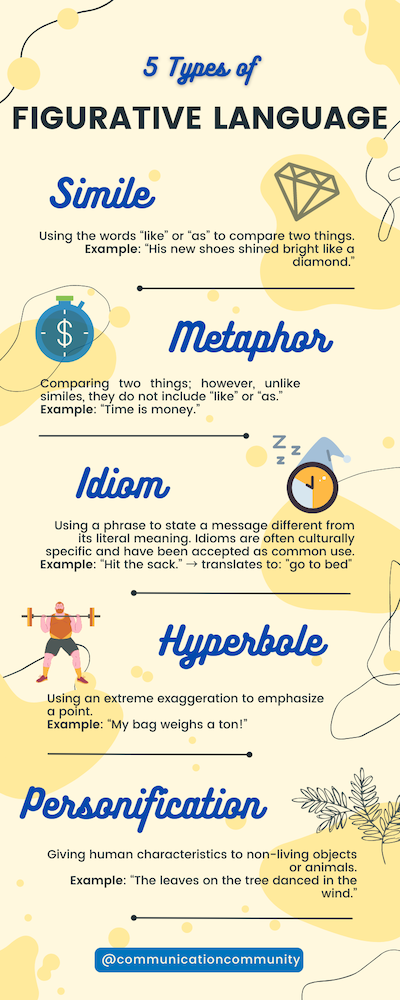
Simile
Using the words “like” or “as” to compare two things.
Examples:
“His new shoes shined bright like a diamond.”
“She ran as quick as a cheetah.”
Metaphor
Comparing two things; however, unlike similes, they do not include “like” or “as.”
Examples:
“Time is money.”
“Life is a highway.”
Idiom
Using a phrase to state a message different from its literal meaning. Idioms are often culturally specific and have been accepted as common use.
Examples:
“Hit the sack!” → translates to go to bed
“Under the weather.” → translates to feeling sick/ill
Hyperbole
Using an extreme exaggeration to emphasize a point.
Examples:
“My bag weighs a ton!”
“I’m so tired I could sleep for days.”
Personification
Giving human characteristics to non-living objects or animals.
Examples:
“The leaves on the tree danced in the wind.”
“The birds sang a sweet melody in their nest.”
Why Do We Teach Figurative Language?
The ability to understand and use figurative language is part of an individual’s language development. This typically occurs in the advanced language period, which means it comes after individuals are able to understand and use literal language (Paul & Norbury, 2012). Individuals with language learning disorders have a greater likelihood of experiencing difficulty understanding the meaning of figurative language forms within written and oral contexts.
This is also evident in individuals with autism spectrum disorders, who often experience difficulties with pragmatic language (social language) and language delivered non-literally. Part of this comprehension limitation is that figurative language requires us as listeners to infer and reason meaning from context, as oftentimes these forms of expression are not explicitly taught. Understanding figurative language is important when it comes to higher academic levels (e.g. high school and college) and the development of complex literacy skills (e.g. the ability to read advanced literature and write longer essays).
Besides the figurative language examples mentioned above, other types of figurative language include alliteration, onomatopoeia, allusion, oxymoron, symbolism, assonance, cliche, and metonymy.
Unlock Figurative Language Resources & Much More
Discover our approach to writing effective figurative language goals, here.
Want even more?
Our Premium Community offers an assortment of figurative language resources, along with a wealth of no-prep tools for language, articulation, and more! For one low price, gain instant access to these resources, join our exclusive Office Hours, and stay ahead with up-to-date research summaries.

References
Paul, R., & Norbury, C. (2012). Language disorders from infancy through adolescence-E-Book: Listening, speaking, reading, Writing, and Communicating. Elsevier Health Sciences.

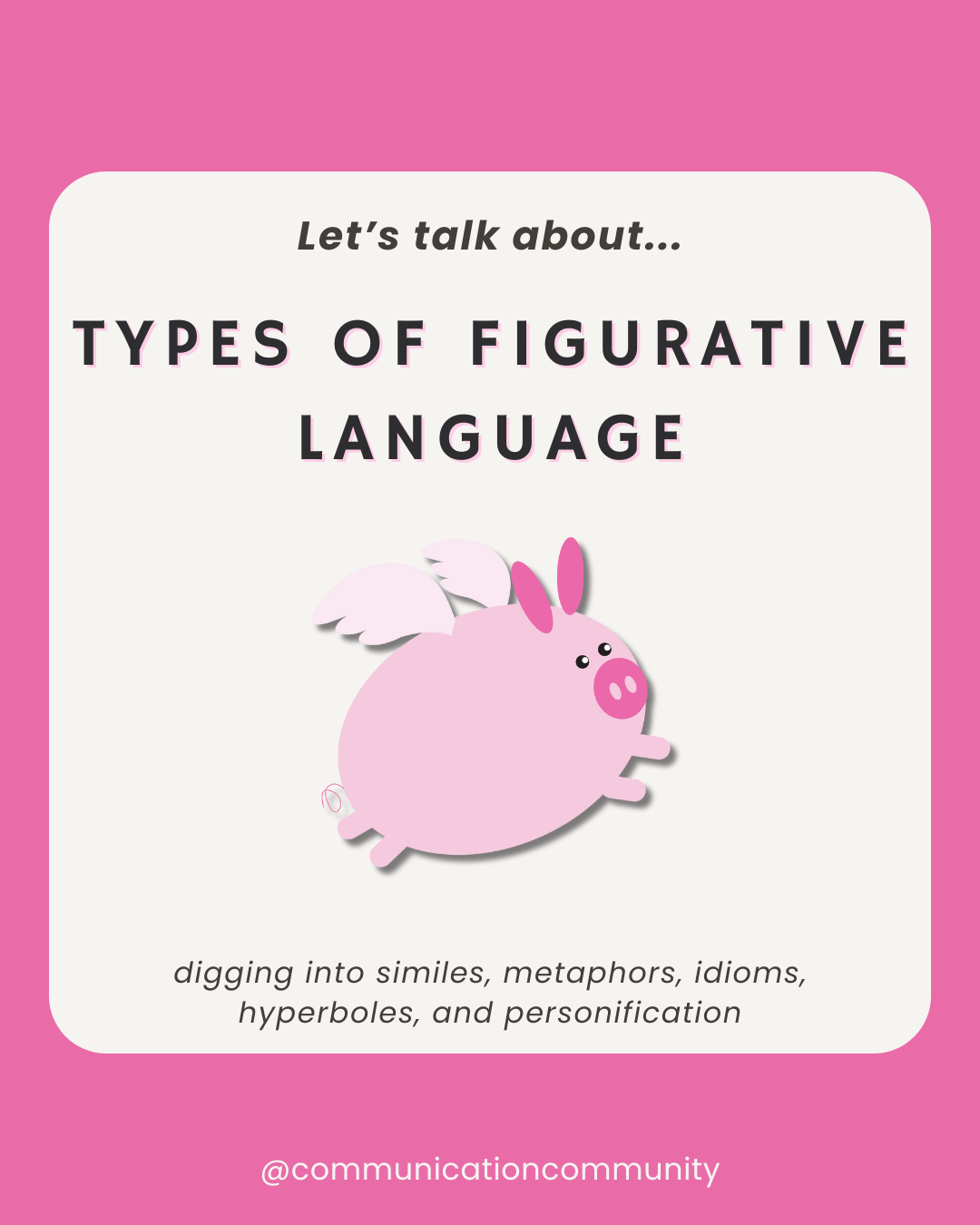
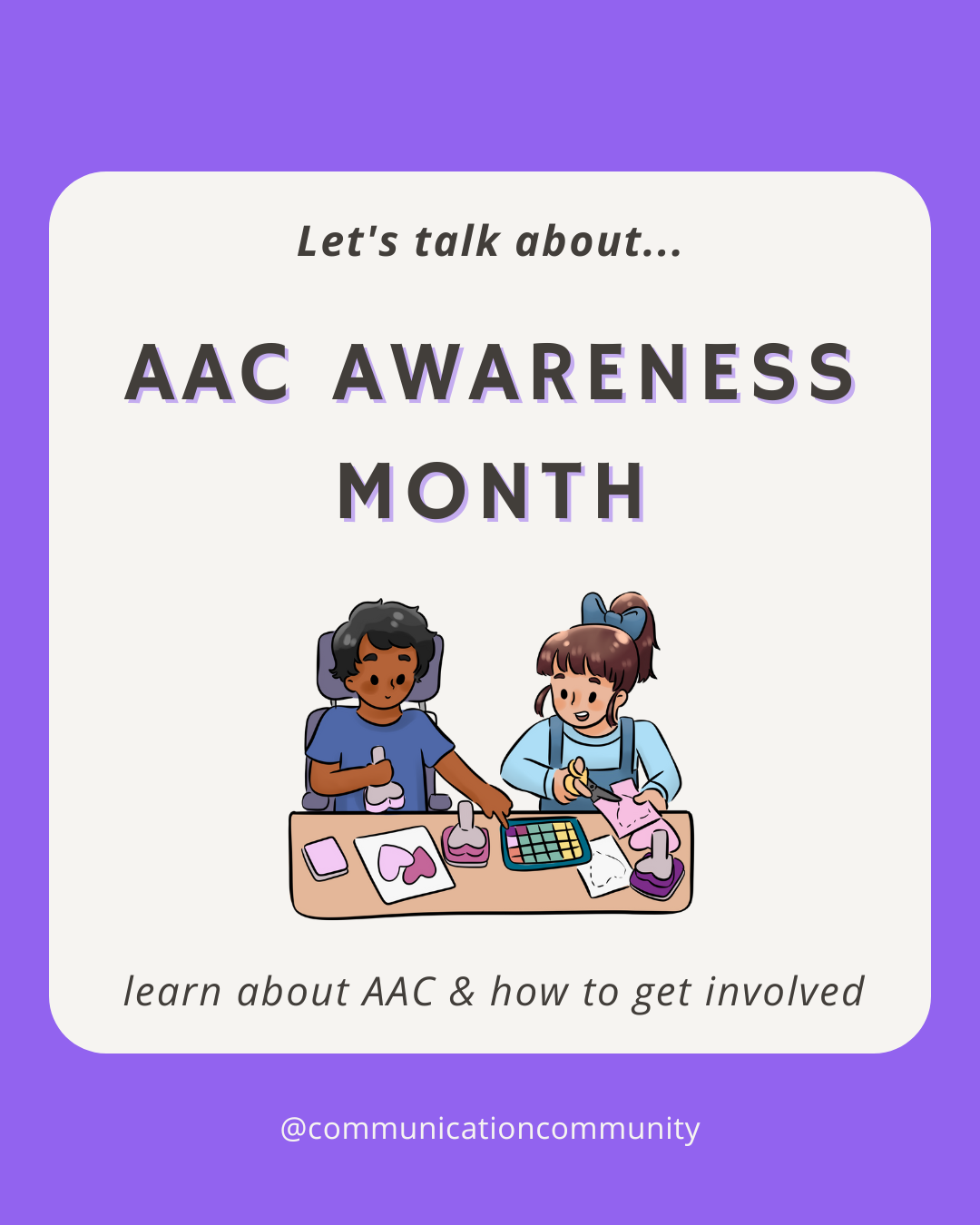
![How to Write Executive Functions Goals [with goal bank]](https://www.communicationcommunity.com/content/images/2024/10/How-to-Write-Executive-Functions-Goals.png)
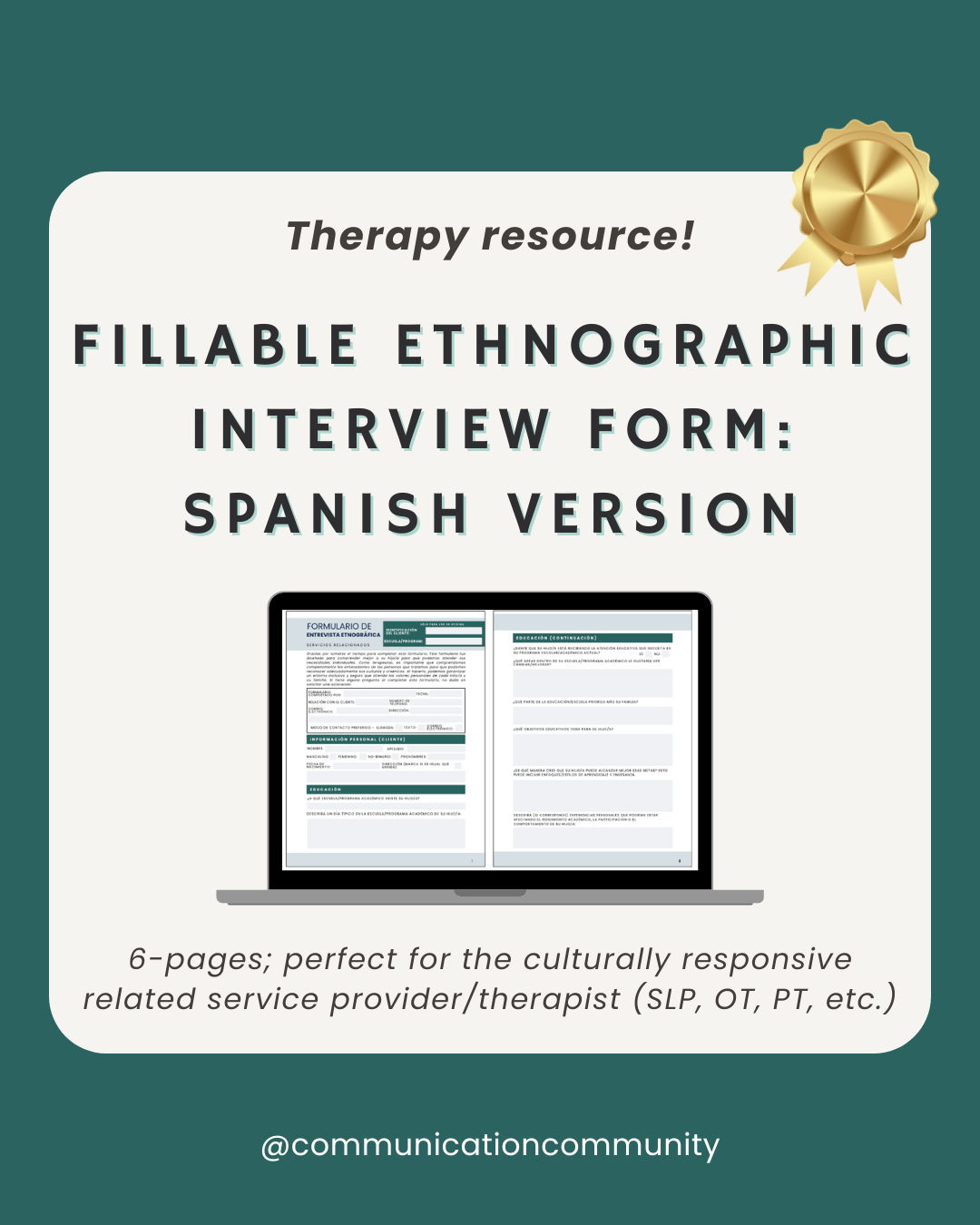
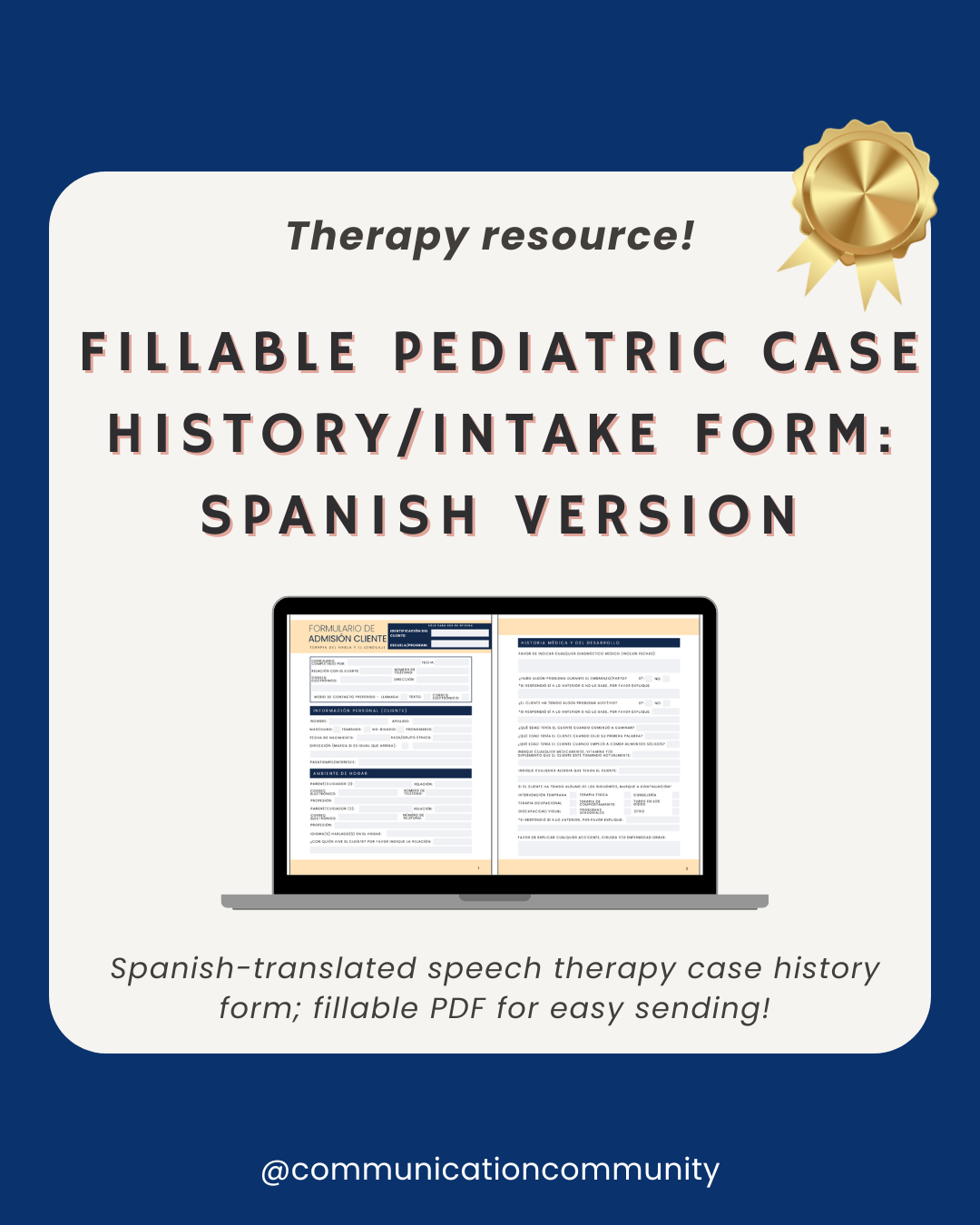
![How to Write Play Skills Goals [with goal bank]](https://www.communicationcommunity.com/content/images/2024/07/Play-Skills-Goals--updated---1-.png)
